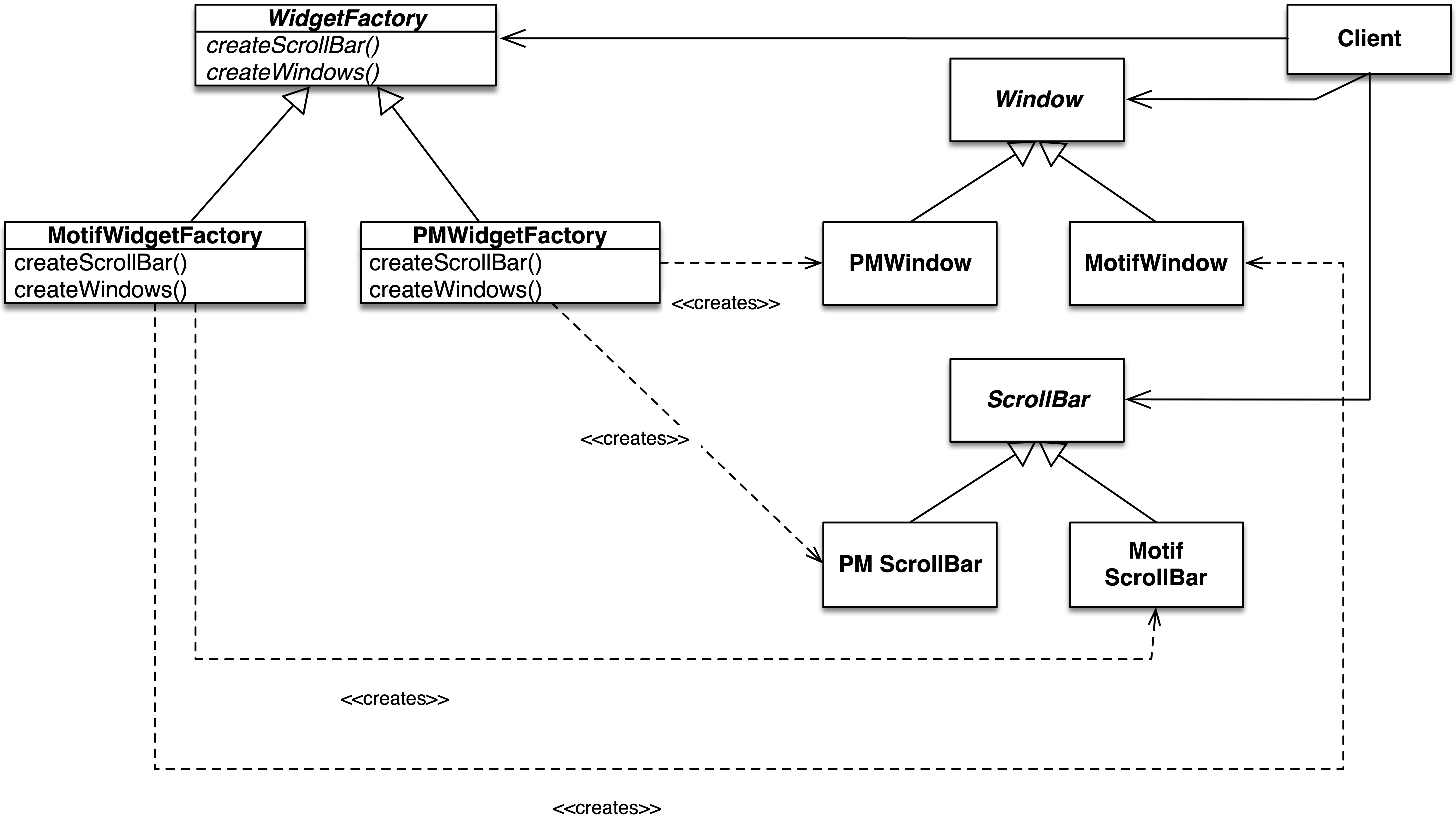Abstract Factory
Gamma et al. 95
Intent
Provide an interface for creating interrelated object families, without specifying their concrete classes.
Motivation
Consider, for instance, an application that runs on different graphic systems (e.g. Motif, Presentation Manager)
Each graphic element (window, button, etc.) must be created differently, depending on the system used.
To do this, an abstract class is used to create the graphic elements
Motivation - example

Applicability (1/2)
A system must be independent of how its products are created, composed and represented
A system must choose one of several product families
Applicability (2/2)
The objects of a family must be used together, and we want to reinforce this constraint.
We want to propose a library of products, without showing their implementation
Structure

Consequences
Clients do not know the implementation classes of the families
Switching between product groups becomes simple
The consistency within a product family is enhanced
It is difficult to add new product families.
Implementation Tradeoffs
Factories are Singletons
Factories define an interface, which can be implemented by a prototype or by a factory method
Definition of extensible factories
Author and Date
Design Patterns: Elements of Reusable Object-Oriented Software. Erich Gamma, Richard Helm,Ralph Johnson, and John Vlissides. Addison Wesley. October 1994.